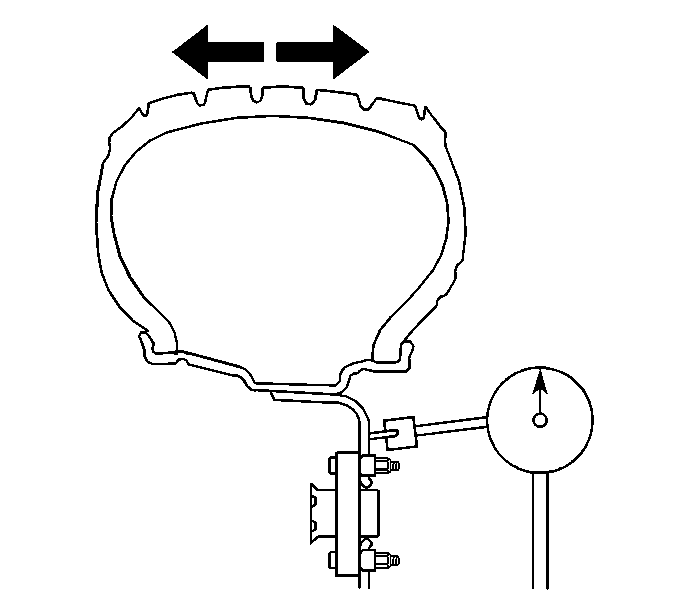Wheel Bearings Diagnosis Do Not Use
| Table 1: | Noise |
| Table 2: | Looseness |
Caution: Do not spin the drive wheels faster than 55 km/h (35 mph) as indicated by the speedometer. This limit is necessary because the speedometer indicates only one half of the actual wheel speed when one drive wheel is spinning and the other drive wheel is stopped. Personal injury and damage may result from high speed spinning.
Non-Serviceable hub and bearing are used at the front and rear wheels. If the hub and bearing are determined to be faulty, replacement is required. Refer to tables below for sealed wheel bearing diagnosis.
Step | Action | Value(s) | Yes | No | ||||||||||
|---|---|---|---|---|---|---|---|---|---|---|---|---|---|---|
1 | Road test vehicle to verify complaint. Is there a noise present? | -- | -- | |||||||||||
2 |
Is bearing noise suspected? | -- | -- | |||||||||||
3 | Determine whether the noise is from the front or the rear bearings. Is the noise coming from the front bearings? | -- | ||||||||||||
4 | Is the noise coming from the rear? | -- | -- | |||||||||||
5 |
Can you hear the noise from the drivers seat? | -- | System OK | |||||||||||
6 |
Can you hear a bearing noise? | -- | System OK | |||||||||||
7 | Replace the bearing and hub assembly:
Is the repair complete? | -- | System OK | -- |
Step | Action | Value(s) | Yes | No |
|---|---|---|---|---|
1 |
Is looseness greater than the value shown for both drum and disc brakes? | 0.1270 mm (0.005 in) | System OK | |
2 | Replace the bearing and hub assembly. Refer to Front Wheel Drive Shaft Bearing Replacement Front Wheel Drive Shaft Bearing Replacement in Front Suspension. Is the repair complete? | -- | System OK | -- |
Wheel Bearings Diagnosis Template
The following procedure describes how to inspect the wheel bearing/hub for excessive looseness. If you are inspecting the wheel bearing/hub for excessive runout, refer to Tire and Wheel Vibration in Vibration Diagnosis and Correction.

Tools Required
J 8001 Dial Indicator
Use the J 8520
- Raise and support the vehicle. Refer to Lifting and Jacking the Vehicle in General Information.
- Mount and secure the J 8001 to a stand.
- Ensure that the J 8001 contacts the vertical surface of the wheel as close as possible to the top wheel stud.
- Push and pull on the TOP of the tire.
- Inspect the total movement indicated by the J 8001 .
- If the measurement exceeds 0.127 mm (0.005 in), replace the wheel bearing/hub. Refer to in Front Suspension or in Rear Suspension.
Important: If you are inspecting the FRONT wheel bearing/hub, support the front of the vehicle by the lower control arms in order to load the lower ball joint.
